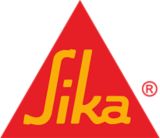
Sarnavap®-5000 E SA FR
Self-adhesive fire reduced vapour barrier
Sarnavap®-5000 E SA FR is a self-adhesive, multi-layered, fire reduced, vapour barrier manufactured from polymer modified bitumen with a glass-fibre mat reinforcement and an aluminium foil top layer.
- Ease and speed of installation from self-adhesive properties
- Temporary waterproof top layer for up to 4 weeks, without the requirement for additional weight/ballast and/or mechanical fastenings
- Good adhesion/bonding strength leading to an air tight roof construction
- Good tear resistance to foot traffic during roof build up activities
- High water vapour resistance makes it suitable in combination with all types of membranes
- Can be bonded onto inclined or vertical surfaces
- Can be bonded onto different types of adjoining substrates
- Complies with the requirements of DIN 18234
